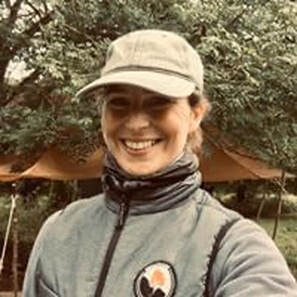|
I'm really looking forward to chatting to Jen Bradley from Eco Living Community tomorrow (5/7/21) live - tune in so you can send us questions live or in advance, you can also catch up on a link I'll set up here and on her youtube page afterwards.
It's a great chance to think about some eco ideas for running forest school sessions so here are my 5 top tips on the changes that I've found to be the easiest! 1. Flannels or squares of cloth instead of wet wipes. Wet wipes are full of plastic and will take hundreds of years to decompose, which is exactly the opposite of the nature connection we are trying to provide for our kids when we're taking them out to Forest School. Forest School will always leave an impact in the woods, even just by trampling, and I want to leave kids with a good world to grow up in, not a devastated world. What I did: I use flannels or cut up squares of cloth in a tin or a washbag. For 'wet' use I soak them in Milton which is fairly eco-friendly and use them as wipes, have a spare bag for dirty cloths after and just wash them in an eco-friendly washing powder after. For dry use as towels, they are easy to keep in a bag and you can wash hands in plain water and eco-friendly soap then dry them on towels. 2. Litter Pick: Don't use glitter, glue, paint, stickers, googly eyes or plastic items that will shed plastic in the woods (includes polypropylene rope) or old plastic tarps that will leave microplastics that get into the food chain. What I do: Use painted stones or white stones instead of googly eyes; natural leaf confetti instead of glitter; natural rope or good quality rope and tarps that don't shed. Litter pick every time I'm out and take away a few items that otherwise will cause damage to the ecosystem. 3. Personal clothing - fleece tops were introduced as a miracle light clothing layer in the early 1990s - we didnt realise until recently how much microplastic these items shed. What I do: use a bag in the washing machine to wash fleeces in to catch microplastics before they enter the water stream. Replace old fleeces at the end of their life with wool items and remember to wash carefully! 4. Lunchtime - Switching our diets to eating more vegetarian and seasonal eating can have a massive impact on air miles for food, encourage local growers and organic farms. What I do: Forage for greens, mushrooms and berries. Swap a few meat based meals or snacks for vegetarian meals and eat seasonally. We often miss low cost seasonal food in favour of things we are used to that are flown from across the planet. Being a little more experimental with locally grown, seasonal veg can help our diets and health. 5. Leave no trace - Aim to leave the Forest School area as it was (or better) once you leave. If the area can go back to a natural state after the Forest School programme, all the better. What I do: fires can leave a large trace, so only have them when needed and use a fire pan if possible to limit damage. When foraging only pick a few items from each location leaving the rest for wildlife, and only pick items if you really need to. Encourage activities that don't require picking natural items but encourage nature connection such as using your senses to connect with nature by observing closely, moving through areas barefoot, listening for animal sounds and taking away any items I bring in.
0 Comments
Your comment will be posted after it is approved.
Leave a Reply. |
AuthorVicki Stewart is the Director of Brightwood Training Limited. She is an ex-RAF Training Officer with a Masters Degree in Development Training in the Outdoors. Experienced team building trainer, Forest School Level 4 Trainer and Approved Forest School Therapeutic Practitioner she writes and teaches nature connection and people development , reviews for academic journals and leads training in outdoor learning and programmes for Universities, companies, mainstream and alternative education. Archives
July 2021
Categories |



 RSS Feed
RSS Feed
